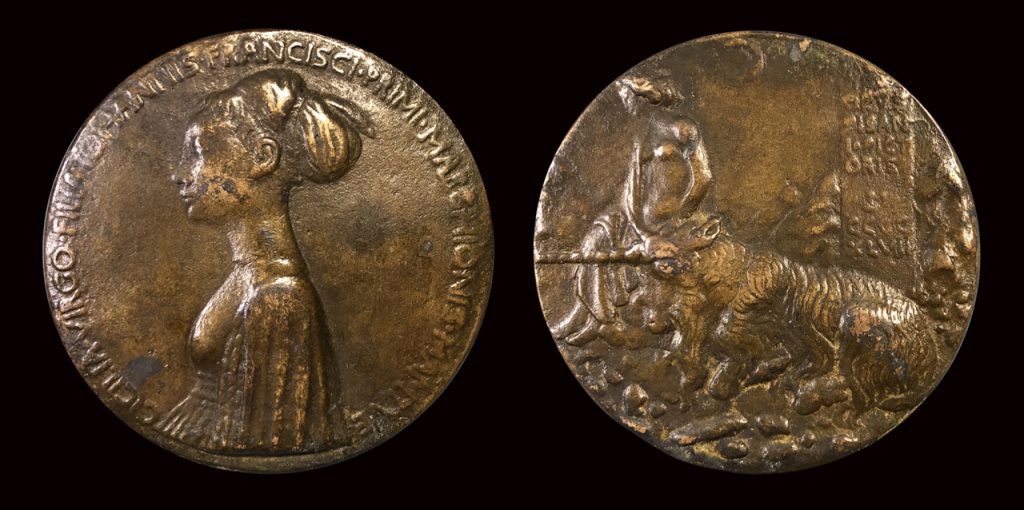- Personage:
-
Cecilia Gonzaga
Cecilia Gonzaga, born in 1425, daughter of Gianfrancesco I. Entered the convent in 1444. Died in 1451 at the age of 26.
- Artist:
-
Antonio Pisano (known as Pisanello)
—
Painter and Sculptor, 1395-1455.
He was born in Pisa, worked in Rimini, Venice, Naples, Ferrara and Mantova. Pisanello is considered ‘The Creator’ of the Renaissance medals.
- Description:
-
Obverse: CICILIA · VIRGO · FILIA · IOHANNIS · FRANCISCI · PRIMI · MARCHIONIS · MANTVE. Bust facing left (half figure); hair taken up and fastened with riband; dress with loose falling sleeves.
Reverse: Rocky landscape, lit by crescent moon; female semi-nude figure, symbolizing innocence. Seated and facing left; left hand rests on the head of a he-goat unicorn, which could only be tamed by a virgin. On the right, a square column inscribed: OPVS · OPISANI · PICTORIS, M · CCCC · XLVII.
- Background:
-
Cast in 1447, when Cecilia was already a nun.
Cecilia Gonzaga was celebrated as a scholar despite her few years. Wishing to pursue her studies rather than marry she elected to join a convent but this met with opposition from her father who had independently arranged for her to marry Oddantonio da Montefeltro of Urbino. Oddantonio reportedly financed his debauched and excessive lifestyle by imposing heavy taxes and was commonly despised. Cecilia refused to marry him. He was ultimately assassinated. The medal’s meaning is clear in its intention to portray the innocence and chastity of the sitter, and the representation of a unicorn in the form of a goat alludes to her acquisition of knowledge. The composition of the medal, the simplicity of the obverse and the symbolism of the reverse, make students of Italian art consider it one of the very best renaissance medals.
- Diameter:
- 81.1 mm. (Max. Diameter reported: 88 mm.). Bronze cast.
- Evaluation:
- Good patina. Likely original cast with slight wear.
- Reference:
- Hill, Corpus 37; Arm I, 5, 12; Currency of Fame 7a; Pollard 20; Kress 17; Syson & Gordon 3.31a, b.
